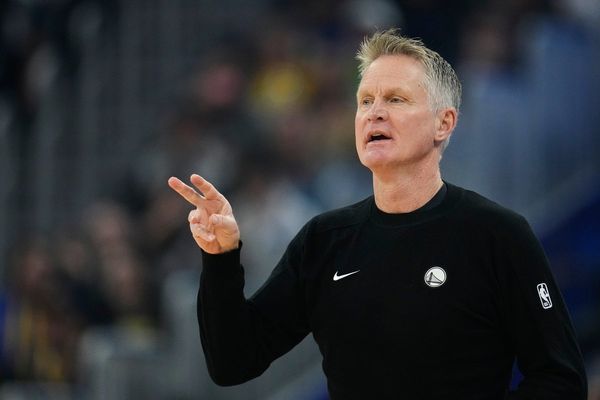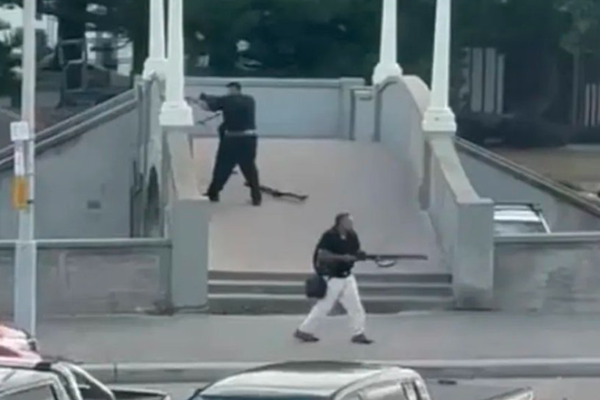
Australians know the government they elect on 3 May will have to navigate multiple crises.
At home, a cost-of-living crisis is making daily life miserable for millions. Sky-high housing costs are locking younger Australians out of a life their parents took for granted.
Internationally, the great disruptor in the White House is breaking the foundations of Australia’s economic and security policies.
Both major parties acknowledge this.
Yet they have come to this electoral battle with pea-shooter solutions at home and no clear responses to the upheavals abroad.
Each has policies to try to help younger Australians into housing, for example, but neither touches the tax regime that contributes most to Australia’s unenviable status as having one of the least affordable housing markets in the world.
Each promises to increase defence spending, but neither has a clear plan to reset security or defence policy or alliances, including Aukus, devised for a different world – one where the United States was a reliable ally and the post-second world war order remained more or less in place.
The grab-bag of promises to put money into voters’ pockets (a small top-up tax cut and extended energy bill relief from Labor, a temporary tax rebate and 25c off a litre of fuel for one year from the Coalition) are by necessity modest, given the catch-22 risk of too much additional discretionary spending pushing interest rates back up, and the fact that the budget is in deficit and forecast to stay there for many more years.
But the competing spending promises often seem tactical, aimed at strategically negating each other’s electoral advantage, rather than forming part of any clear and compelling vision for how we should be positioning for the obvious dangers ahead.
This is not to argue that the major party offerings are indistinguishable.
On global heating, the choice is shockingly stark. Labor has ended Australia’s decades of shameful climate inaction, legislating emissions reductions, investing in renewables and storage, and helping industry switch to zero emissions fuels.
The Coalition, by contrast, would reverse most of those measures. Its promise to meet a 2050 emissions target with a fleet of government-funded nuclear reactors to be operational in a decade is an unconscionable and implausible excuse to do nothing in the meantime and to instead increase Australia’s reliance on fossil fuels and slow the rollout of renewables.
Labor’s policies to help first home buyers are likely to put less upward pressure on house prices than the Coalition’s, and the party has lightened the load for households, with tax cuts and policies on childcare, energy bill rebates and changes to workplace laws.
Peter Dutton has matched Anthony Albanese’s promises of higher subsidies for doctors’ visits and medicines, but the parties have competing ideas for tackling the mental health crisis and there may be merit in Mr Dutton’s plan to increase the number of Medicare-rebated psychology sessions.
Overall, the platforms in this campaign seem to have left the electorate disappointed and underwhelmed, and on many issues progressive voters wish Labor had been bolder.
Neither major party is considering an increase to below-poverty line unemployment payments, something that would alleviate the most acute cost-of-living pain. Despite the promises it took to the last election, Labor has not fixed Australia’s broken environmental protection laws and has no clear plan to do so, while the Coalition would weaken the laws further. Nor has Labor advanced any kind of vision to heal the nation after the disastrous failure of the Indigenous voice to parliament referendum.
Mr Albanese came to office in 2022 promising steady, gradual reform focused on working families. He can legitimately claim to have delivered on that.
He is not a showy leader but he has grown in confidence on the hustings, and the projection of cautious competence has gone some way to assuaging voter doubts about his leadership, according to the published polls.
Mr Dutton, by contrast, has run a poor campaign and the polls show voters liking him less as they see him more. He is a naturally better communicator than Mr Albanese but it has been difficult to follow exactly what he is trying to say. The Coalition’s policies have been announced late, sometimes without details, and have at times been reversed or contradicted.
The opposition leader rejected the government’s small tax cut on the grounds the country could not afford any tax relief, but then offered a last-minute “rebate” of his own. He has promised to slash the immigration intake but not been clear about which parts he would cut.
The Coalition may have hoped Australia would follow the backlash against incumbents evident in so many elections around the world but this campaign coincided with the alarming chaos of Donald Trump actually governing, and this seems to have wrongfooted the Coalition, which began the year convincingly ahead in the polls.
Mr Dutton quickly dialled down any Doge-style policies, although the implausible promise to save money by cutting 41,000 of the 70,000 Canberra public servants remains.
As the campaign entered its final week he also borrowed the Trumpian term “hate media” to describe the election coverage of the ABC and Guardian Australia, apparently for holding his campaign to account.
It is not “hate” but an assessment of the facts that informs Guardian Australia’s view that Mr Dutton does not appear ready to lead and the Coalition has not demonstrated the policy coherence necessary for effective government.
Mr Albanese has kept to the course of gradual progressive change. He understands that allaying the despair and disillusionment in middle Australia is the key to avoiding the extremes of polarisation sweeping the world.
He is aiming for a majority and that may be the outcome on Saturday.
But governing too steadily also risks losing faith with an electorate desperate for life to be different.
About a third of Australians are planning to vote for a party other than one of the two majors, some for Pauline Hanson or the Trumpet of Patriots but many for the Greens, the teals or progressive independents.
Mr Dutton has said he would be willing to negotiate to form a minority government and has engaged more closely with far-right parties than his conservative predecessors in preference dealings.
Polls suggest a minority Labor government is a more likely outcome, and requiring the support of a progressive grouping on the crossbench to pass legislation could push Labor to stare down vested interests and push through bolder solutions. Remember, it was the minority government of Julia Gillard that finally legislated a carbon price.
Many voters around the world, fighting the undermining of democracy and the ravages of populist autocrats, would deeply envy the relative calm of an underwhelming election campaign.
Progressive Australians are left with strategic choices. If they think the country is best served continuing along the path of gradual change they should vote Labor. If they want to vote strategically, understanding the risk of not knowing the ultimate makeup of the parliament, they may choose the Greens, teals or other alternative candidates in the hope of electing a minority Labor government with a progressive crossbench pushing it to move faster.
Governing stability will be crucial as Australia confronts global shockwaves and crises and the caprice of President Trump, but it is also true that underwhelming solutions to chronic inequality and social problems helped to fuel that populism in the first place.







